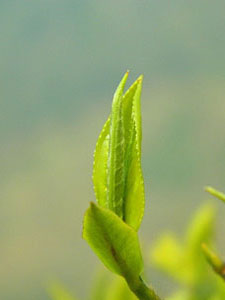A Season for Tea

Casual tea drinkers may not realize that tea is only harvested at certain times of the year. Some are picked only in the spring; others twice or three times during the year, with crops picked in the summer or fall; and very few are even harvested year-round. In any case, tea is a special, time-sensitive crop whose taste will change with the seasons, and spring teas are often considered the best of the crop. Knowing when your tea was harvested lets you know a bit about what to expect in terms of flavor.
The first harvest of the year is called the "first flush". From Darjeelings, to sencha, to many Chinese green teas, first flush is considered to be the best for a number of teas. The first leaves to sprout forth after winter dormancy (in temperate growing areas) are usually very fresh and floral. The spring harvest begins at different times in different countries or regions. Picking begins in March and April for many, and by May these are in full swing, making their way to retailers in the U.S. and into our teacups. Our Spring Darjeeling this year is from the Glenburn Estate, and is a perfect example of a first flush Darjeeling.
But there is always more to look forward to. The later harvests of Darjeelings are nuttier and fruitier (and less pricey!), and they are lovely hot or iced. Our Taiwanese oolong samples have been cupped and ordered, as have Ceylon black samples; we're waiting for Chinese teas to come in as well. Golden Monkey, many green teas (like our Anhui Emerald Seed), and some oolongs like Dan Cong will have begun harvesting in April; Lapsang souchong, Ti Kuan Yin, and Pai Mu Tan (White Peony) production begins in May. With Assam teas, the second flush is usually preferred and we tend to get samples in the summer. And while the leaves for jasmine scented teas are plucked in the spring, the jasmine flowers don't bloom until the summer. The tea is carefully stored until then, and once the flowers are in full swing, the tea is layered with jasmine blooms night after night until the perfect scent is reached. It seems like more tea is always on the horizon!
There are also special harvests of teas that occur at some non-standard times of the year. Autumn flush Darjeeling teas present a different flavor profile than the spring and summer flushes - less delicate but a bit more muscatel. Wintertime brings "frost teas" from India's Nilgiri region from December through March - the cold weather leads to a unique flavor from stress compounds in the tea bushes. There are also winter harvest oolongs that can be very floral and creamy, and are worth a try.
With so many different flavors available from different harvests, we're sure you'll be able to find something you really love!
